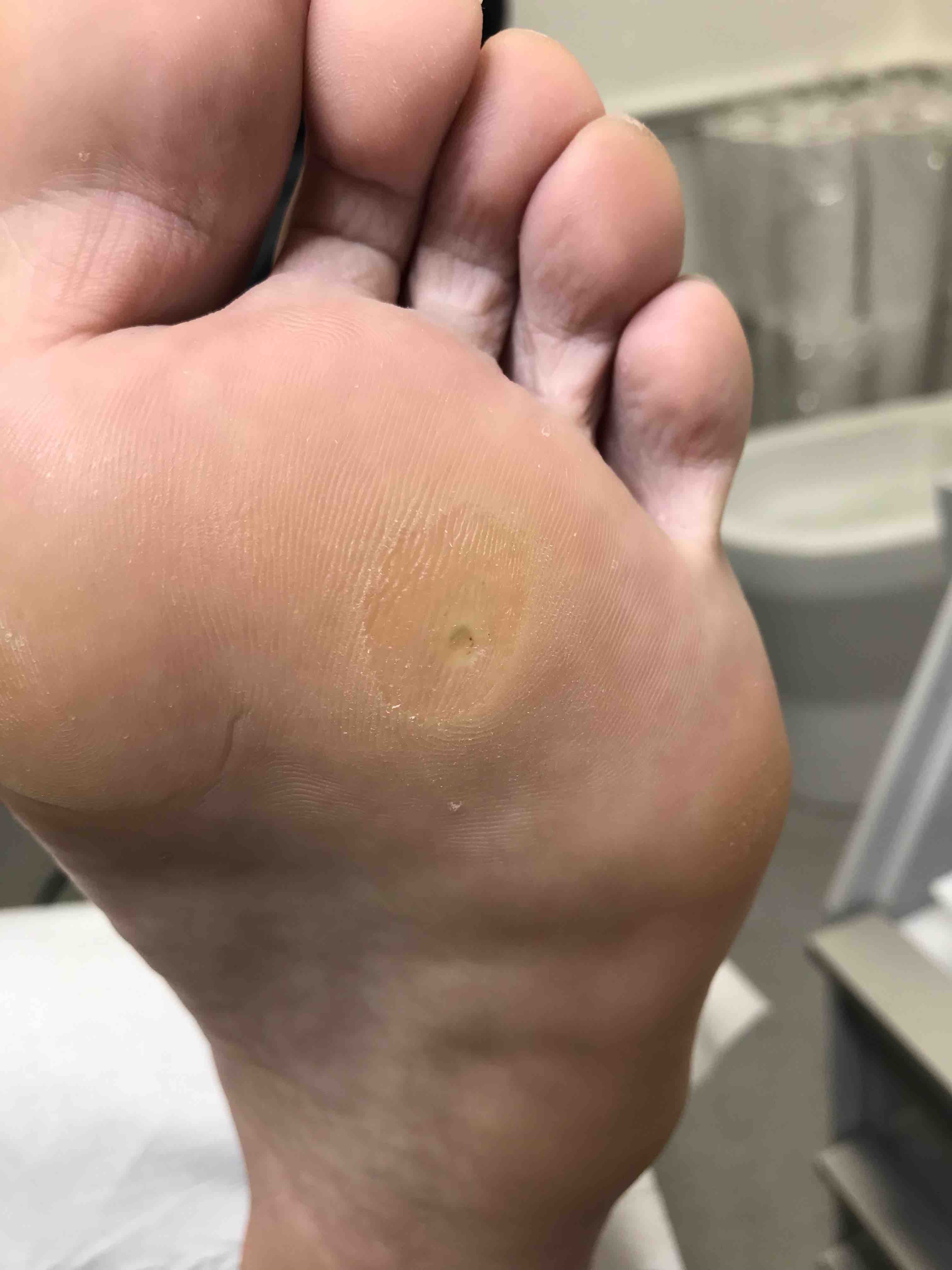All About Corns and Calluses

At Beauchamp Foot Care in Knightsbridge, we’re used to seeing patients who spend a lot of time on their feet. Two of the most common complaints we see at our clinic on a daily basis are corns and calluses.
Here we take a look at what these are, how to avoid them and how they are best treated by a professional podiatrist.
Corns vs Calluses: What’s the Difference?
Corns and callouses may seem fairly similar but there are some big differences between the two.
Corns usually form because of pressure or rubbing over delicate areas like the joints. You can get them on the feet and toes and on your hands if you do a lot of manual work. The main characteristic is that these are fairly small with a central core and can be painful when pressure is applied.
Calluses generally tend to form on the soles of the feet and are often bigger areas of hardened skin. While poor footwear can cause calluses, you might also develop them if you have a deformity in the bones of your feet. Older people tend to be less protected with fatty layers on the soles and might suffer from calluses more because of this. Calluses aren’t normally painful but can be unsightly, especially if the hardened skin is allowed to build up over time without treatment.
Different Types of Corns
While calluses come in one variety, corns can actually manifest in several different types:
- Hard corns are the most common. You’ll most likely see a small, hard area of skin around the toes. Calluses and hard corns can also combine and it may be a sign that you might have an underlying problem that needs to be addressed.
- Soft corns are slightly more rubbery in texture and normally appear between the toes. They are whiter in colour and can develop because of sweaty feet.
- Seed corns are smaller and occur in clusters, most usually on the bottom of your feet.
- Vascular and neurovascular corns have nerves and blood vessels associated with them and can be quite painful to touch or walk on.
- Fibrous corns have grown deeper into the underlying body tissue, more so than ordinary corns, which means removing them can be more challenging.
Treating Corns and Calluses
There are off-the-shelf treatments for getting rid of corns and calluses but we always advise that you seek the advice of a qualified podiatrist before you try any of these. First, they are not always successful or appropriate and, secondly, they may cause issues especially if you suffer from a condition like diabetes.
Treating something like a corn requires accurate diagnosis and the use of a medical procedure such as removing the thickened area with a sharp blade. Your podiatrist will also be able to advise how to look after your feet and reduce the risk of getting corns and calluses in the first place. Under no circumstances should you try to cut the corns and calluses away yourself.
Preventing Corns and Calluses
The biggest cause of corns and calluses by far is badly fitting footwear. Switching to more comfortable shoes and wearing reasonably thick socks should make a big difference, especially if you spend a lot of the day on your feet.
Better care of your feet, such as giving yourself a soak and keeping the skin moisturised can also prevent problems developing. A regular medical pedicure should ensure that any issues are spotted early and your feet stay in tip-top condition all year round.
If you have trouble with corns or calluses and want the expert help of a professional podiatrist, contact the team at Beauchamp Foot Care today to book an appointment.
All information on this website is for general guidance only and is not intended as a substitute for the personal medical advice of health care professionals or your own doctor.
